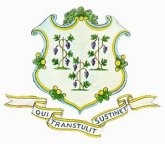 |
STATE OF CONNECTICUTOFFICE OF THE STATE COMPTROLLER |
 |
Coding
1.0 Coding in Core-CT
1.1 General Information
Chartfields are key data fields and values used on transactions to specify an accounting distribution. Each ChartField is used to record a specific type of financial data. A combination of ChartFields defines an account distribution used to create journal entries in the general and subsidiary ledgers. The ChartFields used in Core-CT are:
1. Business Unit
2. Fund
3. Department
4. SID
5. Program
6. Account
7. Project
7.1 Source Type
7.2 Category
7.3 Sub-Category
8. Chartfield 1
9. Chartfield 2
10. Budget Reference
2.0 Coding Responsibility
Accurate coding is essential to good reporting on an agency and statewide level. Chartfield values should be verified when documents are moving through the approval process in Core-CT. Agencies should establish business procedures to ensure that all staff are aware of the coding necessary to achieve accuracy in all reporting. Information regarding changes or additions to coding should be shared with all staff who use coding in their work. Each agency should have a designated person or group identified as the �go to� for clarification on coding. It is incumbent on the head of the agency to ensure that all workers have access to the knowledge necessary to complete their work correctly.
3.0 Chartfield Values
3.1 Business Unit
The Business Unit Chartfield can represent an organization or sub-set of an organization that is independent with regard to one or more operational or accounting functions. This ChartField may have different definitions in the various modules. For example, an agency may have one Accounts Payable Business Unit and several Inventory Business Units. The State of Connecticut's Accounting System modules define Business Units at different levels. General Ledger has one Business Unit: STATE. Accounts Payable, Purchasing and Accounts Receivable modules have lower level definitions. Not all agencies have an Inventory or Project Costing Business Unit. It is a required ChartField on all expenditure and revenue transactions. When working in Core-CT the Business Unit field may or may not populate with your business unit. If you must populate the field you can click on the look-up icon to see a full listing of business units for that module. You can find a complete listing of agencies in the Miscellaneous section of this manual. Put in a link
3.2 Fund
The Fund ChartField is defined as a financial and accounting entity with a self-balancing set of accounts. It records cash and other financial resources, with related liabilities, fund balance, and any corresponding changes, which are segregated for the purpose of carrying on specific activities or attaining certain objectives in accordance with special regulations, restrictions, or limitation. It is a required ChartField on all expenditure and revenue transactions. When working in Core-CT, you may click on the look-up icon to see a full listing of the fund values.
3.3 Department
Identifies the financial management organizational entity associated with a particular financial transaction. Organization values represent any divisional breakdown of an entity into operating units. Department values are used to capture the financial management view of the state's agencies, boards, and commissions. Combined with other ChartField values, they form the basis for department budgets that track expenditures and revenues. It is a required ChartField on all expenditure and revenue transactions. When working in Core-CT, you may click on the look-up icon to see a full listing of department values. To limit your search, you should enter the first 3 letters of your agency acronym. For example, if you work for the Office of the State Comptroller, you would enter OSC to limit the search results to Department values for your agency.
3.4 SID (Special Identification Code)
SID (Special Identification Code) is used to uniquely define appropriation budgets by tying an accounting transaction back to the appropriations act via a combination of other ChartFields - Fund + Dept + SID. The SID also defines the source and use of funding in non-appropriated Funds. It is a required ChartField on all expenditure and revenue transactions.
Valid Fund/Sid Combinations
Fund Class Fund Range Valid SIDs Budgeted Funds 11000 10000 to 19999 Budgeted Funds 12001 10000 to 19999 Budgeted Funds 12003 to 12004 10000 to 19999 Budgeted Funds 12006 to 12007 10000 to 19999 Budgeted Funds 12009 to 12010 10000 to 19999 Budgeted Funds 12013 to 12014 10000 to 19999 Capital Projects 13000 to 13999 20000 to 49999 Capital Projects 17000 to 17999 20000 to 49999 Debt Service 14000 to 14999 40000 to 49999 Enterprise 21000 to 21999 40000 to 49999 Fiduciary 30000 to 39999 40000 to 49999 Grant Transfers 12060 20000 to 49999 Grant Transfers 12060 90000 to 99998 Grant Transfers 12062 20000 to 49999 Grant Transfers 12062 90000 to 99998 Internal Service 22000 to 22999 40000 to 49999 Special Revenue - Not Budgeted 12002 40000 to 49999 Special Revenue - Not Budgeted 12005 40000 to 49999 Special Revenue - Not Budgeted 12008 40000 to 49999 Special Revenue - Not Budgeted 12011 to12012 40000 to 49999 Special Revenue - Not Budgeted 12015 to 12059 40000 to 49999 Special Revenue - Not Budgeted 12061 40000 to 49999 Special Revenue - Not Budgeted 12063 to 12066 40000 to 49999
When working in Core-CT, you may click on the look-up icon to see a full listing of SID values. The listing is a State-wide listing and it is incumbent on the user to select the correct SID with Fund and Dept values.
3.5 Program
Captures related activities that cross organizations and are directed towards the accomplishment of a set of recognizable objectives. The State may set up program ChartField values to track revenue and expenditures for, and apply budgetary control to, programs within each business unit. It is a required ChartField on all expenditure and revenue transactions. When working in Core-CT, you may click on the look-up icon to see a full listing of Program values. The listing is a State-wide listing and it is incumbent on the user to verify that the Program value selected is appropriate for their entries.
3.6 Account
Used to specify the balance sheet account or operating account (i.e. expenditure or revenue codes) on financial transactions. Each account is assigned an account type which indicates whether the value entered in the Account ChartField is an asset, liability, fund equity, expenditure or revenue type account. It is a required ChartField on all expenditure and revenue transactions. When working in Core-CT, you may click on the look-up icon to see a full listing of Account values. The listing is all inclusive and the letter to the right of the description field will indicate the type of account.
Accounts beginning with the number
�1� are Asset Accounts and have an A;
�2� are Liability Accounts and have an L;
�3� are Fund Equity Accounts and have a Q; r
�4� are Revenue Accounts and have an R;
�5� are Expenditure Accounts and have an E.For a full listing of Revenue Accounts see: https://osc.ct.gov/StateAcct/sam/coding/rev_index.htm. If you need assistance selecting the correct revenue account for a transaction, contact your agency budget staff or the Budget & Financial Analysis Division at the Office of the State Comptroller. https://osc.ct.gov/bfa/
For a full listing of Expenditure Accounts see: https://osc.ct.gov/StateAcct/sam/coding/exp_index.htm If you need assistance selecting the correct expenditure account for a transaction, contact your agency budget staff or the Accounts Payable Division at the Office of the State Comptroller. https://osc.ct.gov/apd/
3.7 Project
Captures and controls project and grant information. The accounting system supports both Project and Grant ChartField values in the same database table. The Project ChartField is designed to track project and grant financial activity, which can cross budget years, funds and departments. It is a required ChartField on all expenditure and revenue transactions.
When working in Core-CT, you must enter a value in the PC Bus Unit field before entering a value in the Project field. Most agencies do not use the Project Costing module and they should select NONPC as the PC BUS Unit. If an agency does use the Project Costing module they should select their Business Unit in the PC BUS Unit field.
In the Project field, agencies should enter the first three letters of their agency acronym, to limit the search values. Project Costing agencies should select the appropriate project value. Every transaction in a project costing agency will not have a specific project associated with it. For these transactions, the agency can select XXX_NonProject. The NONPC business units may or may not have project values configured for budgeting. If the agency does not use these configured values for budgeting they should select the value XXX_NonProject.
3.71 Source Type
This chartfield allows Project Costing Agencies to identify transactional data at a more detailed level.
3.72 Category
Identifies Project transactional data associated to a given cost at a more detailed level. It is used in conjunction with Source Type.
3.73 Sub-Category
Identifies Project transactional data associated to a given cost at a more detailed level. It is used in conjunction with Source Type and Category.
3.8 Chartfield 1
Captures data relating to activities of a particular project or grant. It is a required ChartField on all expenditure and revenue transactions posted to Project 3 Budgets. When working in Core-CT, you may click on the look-up icon to see a full listing of Chartfield 1 values. The listing is a State-wide listing and it is incumbent on the user to verify that their agency budget structure does/does not require a Chartfield 1 value.
3.9 Chartfield 2
Used for capturing agency specific values that are not captured by any of the other ChartFields. It is not a required ChartField on expenditure and revenue transactions. When working in Core-CT, you may click on the look-up icon to see a full listing of Chartfield 2 values. The listing is a State-wide listing and it is incumbent on the user to verify that their agency does/does not require a Chartfield 2 value.
3.10 Budget Reference
Identifies separate overlapping budgets that share the same combination of non-budget reference ChartFields. The fiscal year in which the funding is received is used as the Budget Reference.